[tldr]
- Having strong glutes can help you prevent injury, improve performance and move better
- Most people have weak glutes because of inactivity.
- Butt exercises should target the muscles of the entire glute complex including the gluteus maximus, medius and minimus muscles.
[/tldr]
Note: These glute exercises are not gender-specific — experts recommend them all for both men and women.
Everyone wants a better butt these days, and not just to look good in jeans. A strong set of glutes can stave off injuries, improve athletic performance, and help you move well as you age.
“Walking, running, jumping, change of directions, and, well, just about everything is better with strong glutes,” says Brett Jones, MS, ATC, CSCS, founder of Applied Strength.
And not to drop a truth bomb but, most of us need to be doing glute exercises — and aren’t. “Lack of use is the biggest reason so many people tend to have weak glutes,” says Cassandra York, PhD, MS, RD, CSCS, best-selling fitness author and a professor at Central Connecticut State University. “We don’t walk as much as we used to. We don’t take the stairs. And when we do move, we tend to be quad dominant,” says York.
Over time, having weak glutes can lead to hip, knee and low back pain. Athletes with glute weakness are also prone to acute injuries such as ACL tears and hamstring strains.
A good butt workout should target the muscles of the entire glute complex: the big, power-producing gluteus maximus, and the smaller, stabilizing gluteus medius and minimus. Below, York, Jones, and award-winning personal trainer Katie Gould share 13 effective butt exercises you can do at home with minimal equipment. All you need for these glute exercises is a flat resistance band/mini band and a kettlebell.
Glute exercises with bands
1. Clamshells
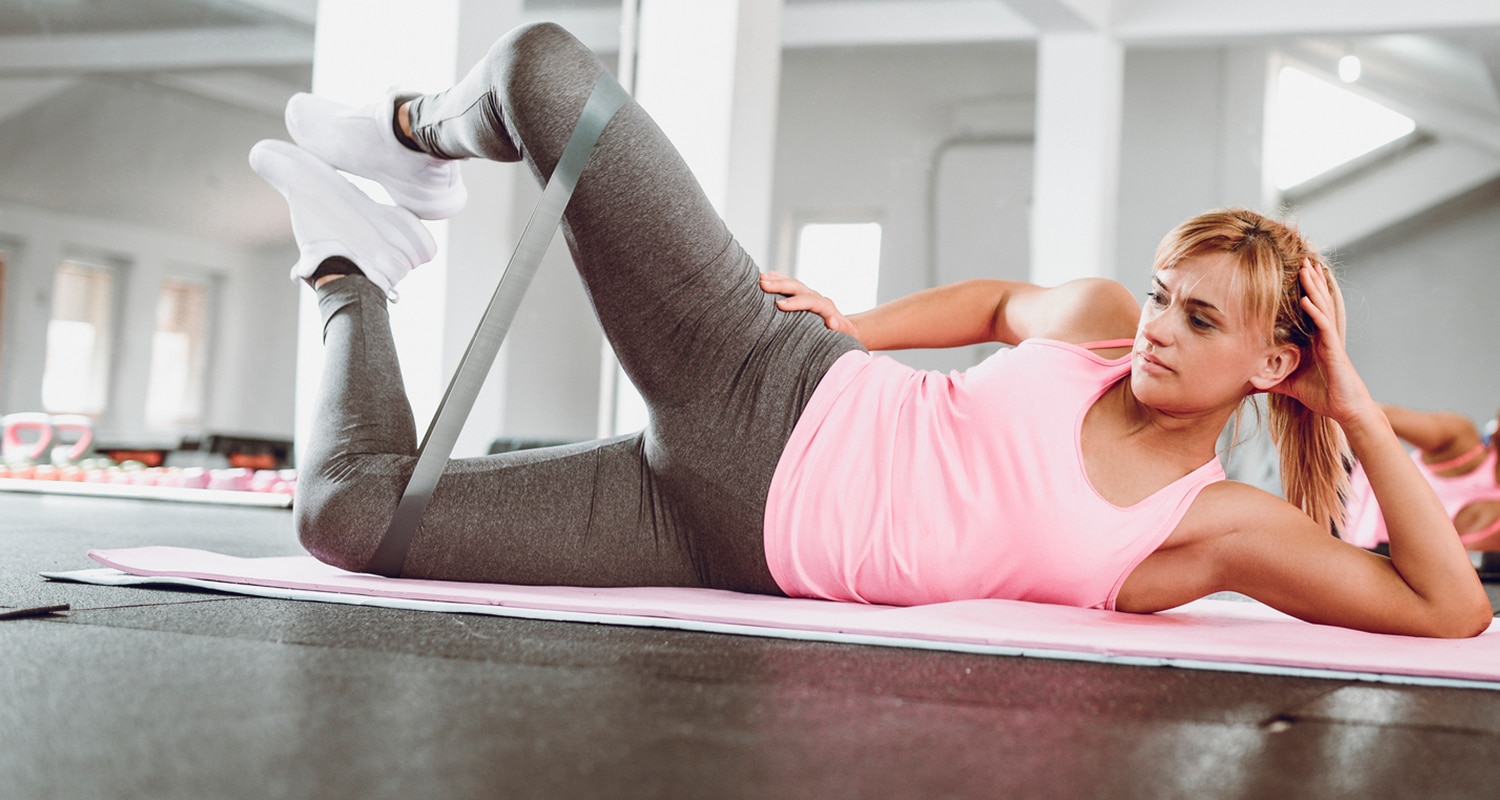 Place a light resistance band around both legs, just above your knees. Lie on one side with knees bent, hips stacked and feet together. Make sure your butt is not tucked. Exhale as you lift your top knee, keeping your feet together. Inhale as you return your knee to the starting position. Do 15 reps. Switch sides.
Place a light resistance band around both legs, just above your knees. Lie on one side with knees bent, hips stacked and feet together. Make sure your butt is not tucked. Exhale as you lift your top knee, keeping your feet together. Inhale as you return your knee to the starting position. Do 15 reps. Switch sides.
Targets: gluteus medius and minimus
2. Lateral stepping
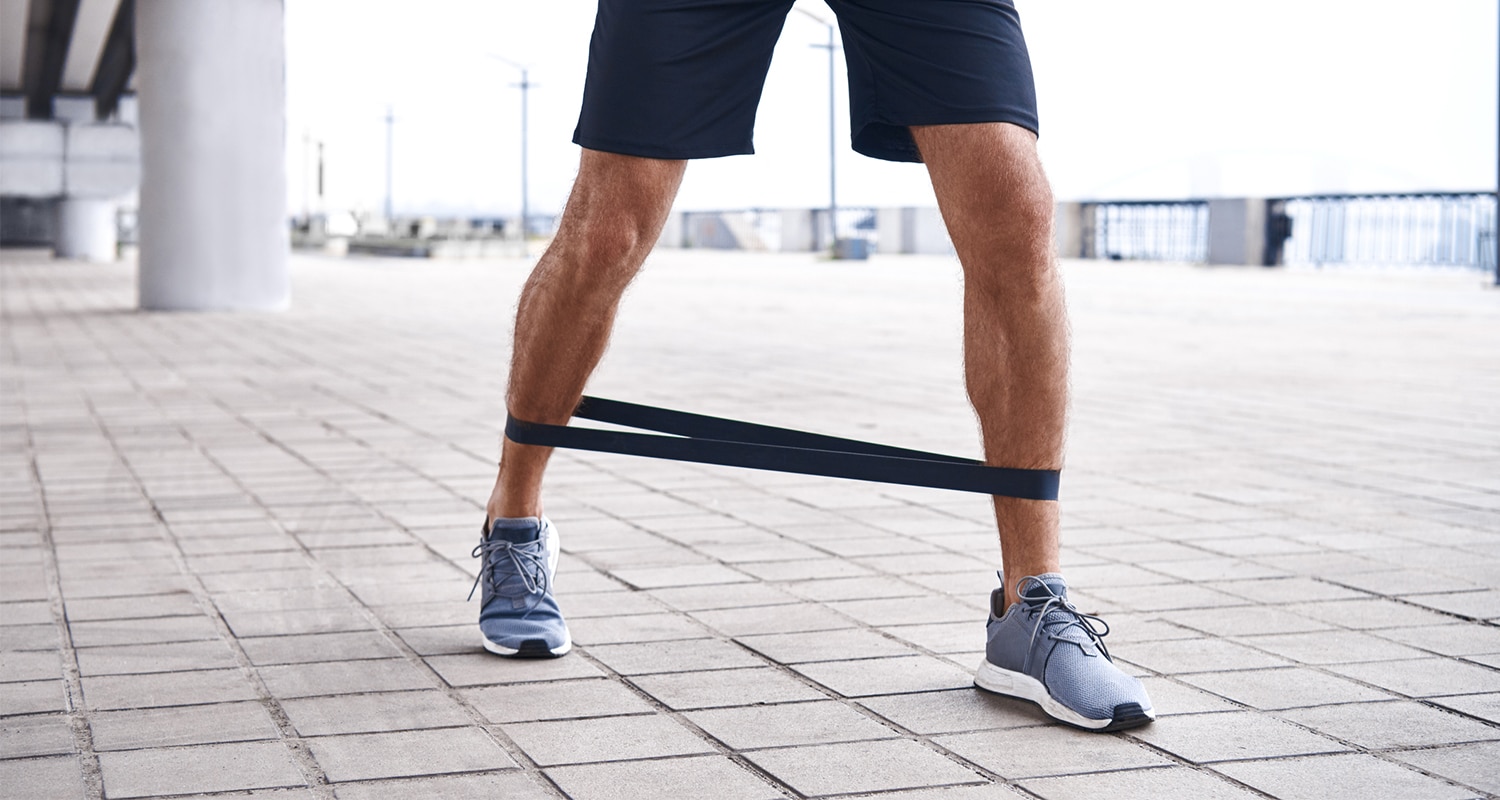 Secure a flat resistance band just above your ankles and stand with your feet at about hip-width, keeping feet forward. Keeping your weight in your heels, step your right foot laterally, maintaining the tension in the band. Keep the band taut as you step your left foot slightly to the right. Continue stepping sideways to your right for about 5 steps. Then step to your left to return to the starting position. Repeat three times.
Secure a flat resistance band just above your ankles and stand with your feet at about hip-width, keeping feet forward. Keeping your weight in your heels, step your right foot laterally, maintaining the tension in the band. Keep the band taut as you step your left foot slightly to the right. Continue stepping sideways to your right for about 5 steps. Then step to your left to return to the starting position. Repeat three times.
Targets: gluteus medius and minimus
3. Hip thrusts with band
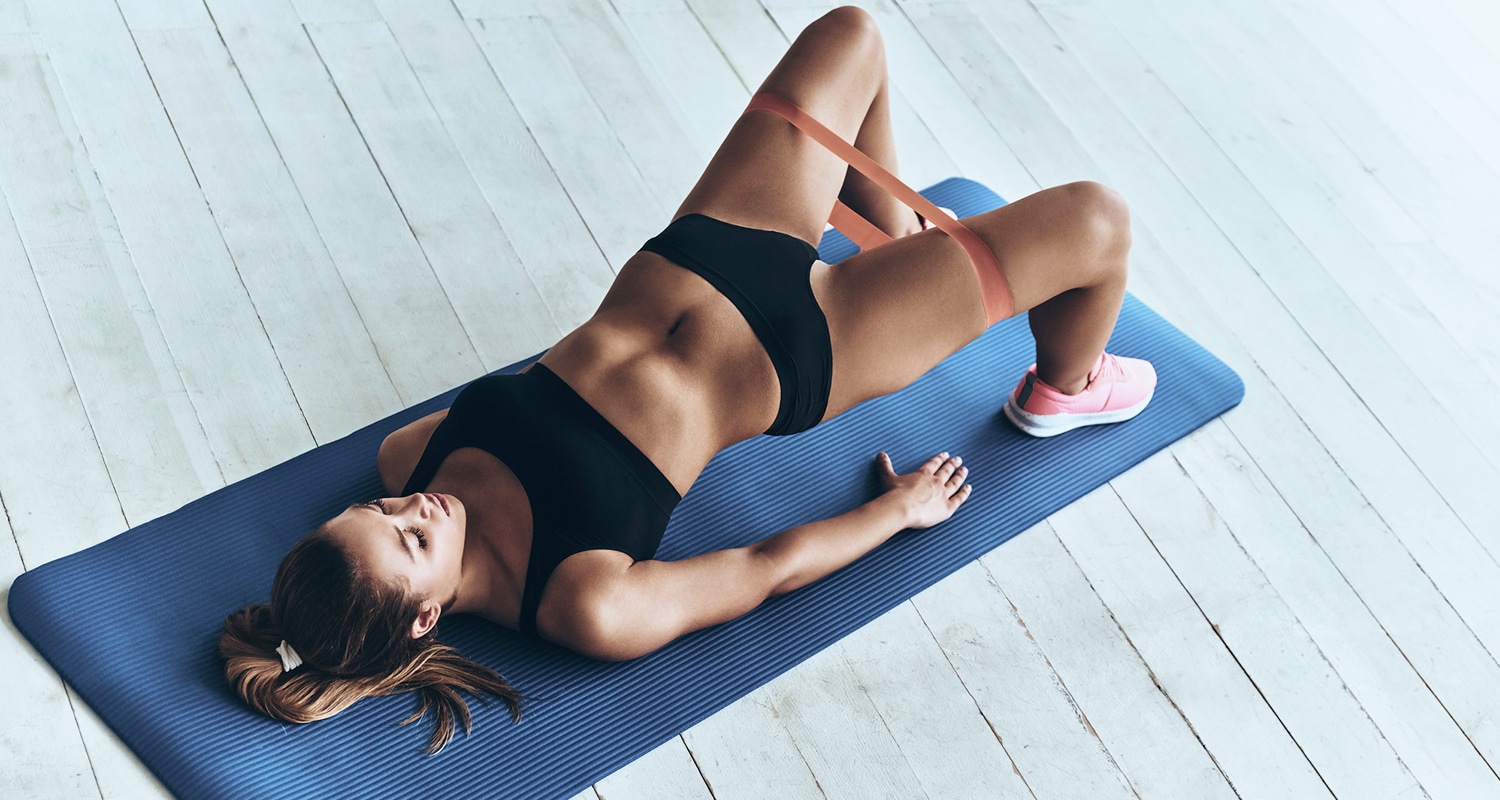 Lie on your back with knees bent and feet flat on the floor. Place a band above your knees. Exhale as you drive your heels into the ground and lift your hips as high as possible, keeping the band taut. Inhale as you slowly lower your hips back to the starting position. Do 12-15 reps.
Lie on your back with knees bent and feet flat on the floor. Place a band above your knees. Exhale as you drive your heels into the ground and lift your hips as high as possible, keeping the band taut. Inhale as you slowly lower your hips back to the starting position. Do 12-15 reps.
Targets: gluteus maximus, hamstrings, quadriceps, gluteus medius and minimus, abdominals
4. Standing kickbacks with band
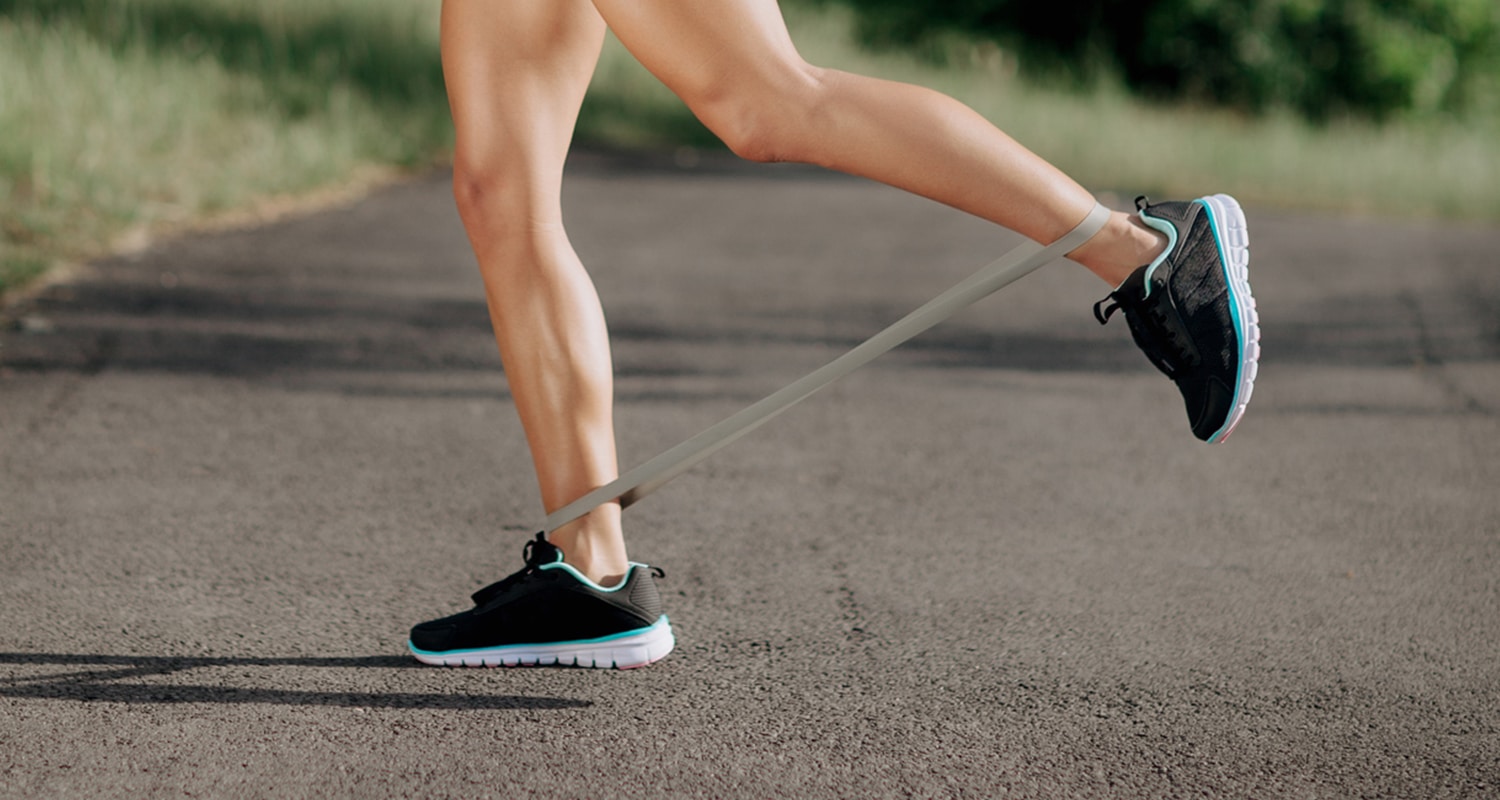 Place a band around your ankles. Shift your weight into your right foot and place the toes of your left foot on the ground about an inch behind your right foot, so there is tension in the band. Exhale as you kick your left leg back about six inches. Avoid arching your back and keep your knees straight. Inhale as you return your left foot to the starting position. Do 10-12 reps. Switch sides.
Place a band around your ankles. Shift your weight into your right foot and place the toes of your left foot on the ground about an inch behind your right foot, so there is tension in the band. Exhale as you kick your left leg back about six inches. Avoid arching your back and keep your knees straight. Inhale as you return your left foot to the starting position. Do 10-12 reps. Switch sides.
Targets: gluteus maximus, hamstrings, gluteus medius and minimus
Butt exercises with kettlebell
5. Deadlifts
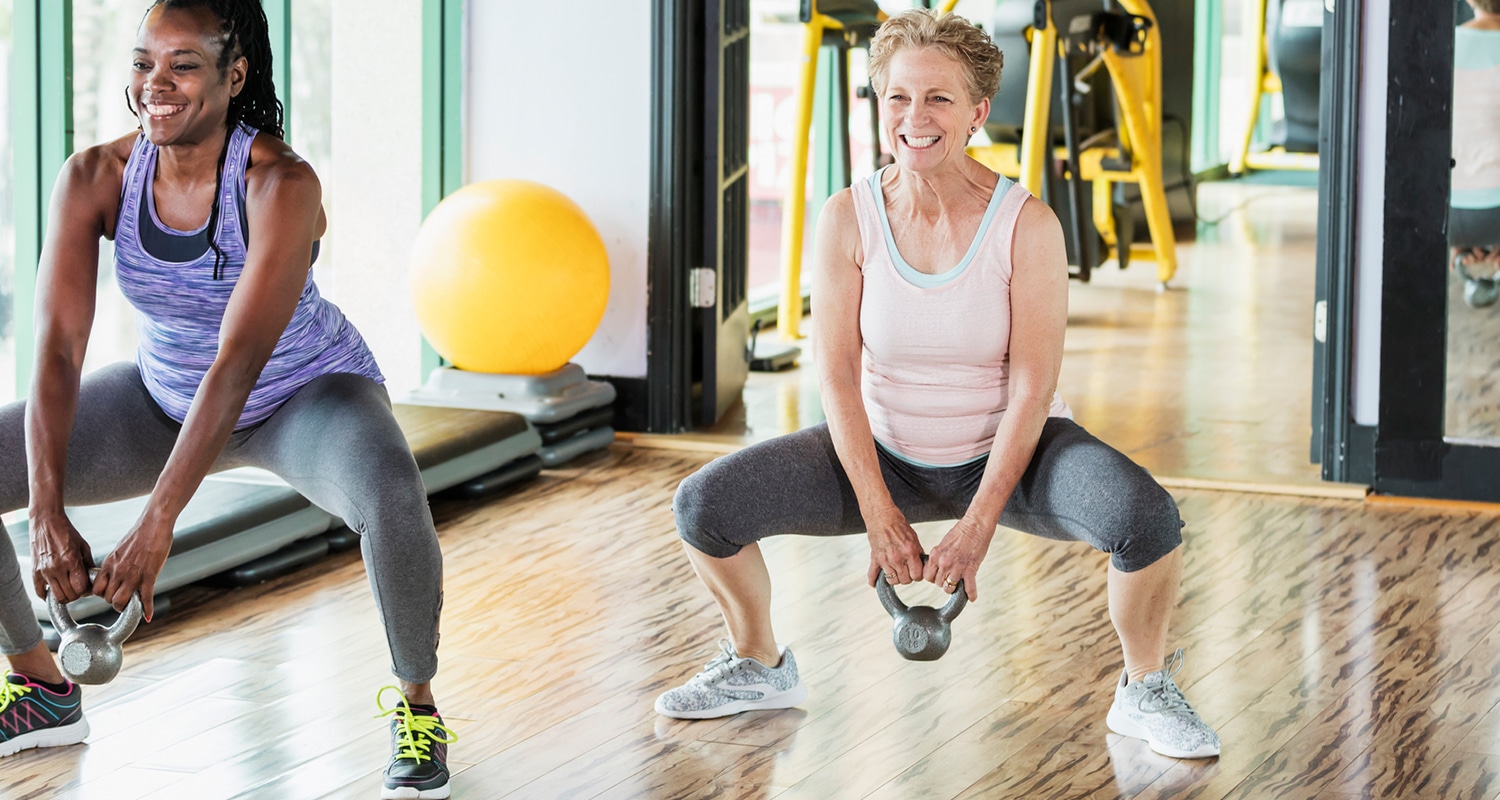 Stand with your feet at shoulder width and position a heavy kettlebell between your feet. Hinge at your hips and bend your knees while lowering your hands to the kettlebell handle. Your shins should stay vertical. Gripping the handle, exhale as you drive through our heels to extend your hips and rise to standing. Inhale as you slowly lower the kettlebell back toward the ground by hinging at the hips and allowing your knees to bend as needed. Do 10 reps.
Stand with your feet at shoulder width and position a heavy kettlebell between your feet. Hinge at your hips and bend your knees while lowering your hands to the kettlebell handle. Your shins should stay vertical. Gripping the handle, exhale as you drive through our heels to extend your hips and rise to standing. Inhale as you slowly lower the kettlebell back toward the ground by hinging at the hips and allowing your knees to bend as needed. Do 10 reps.
Targets: gluteus maximus, hamstrings, upper and lower back, abdominals
6. Kettlebell swings
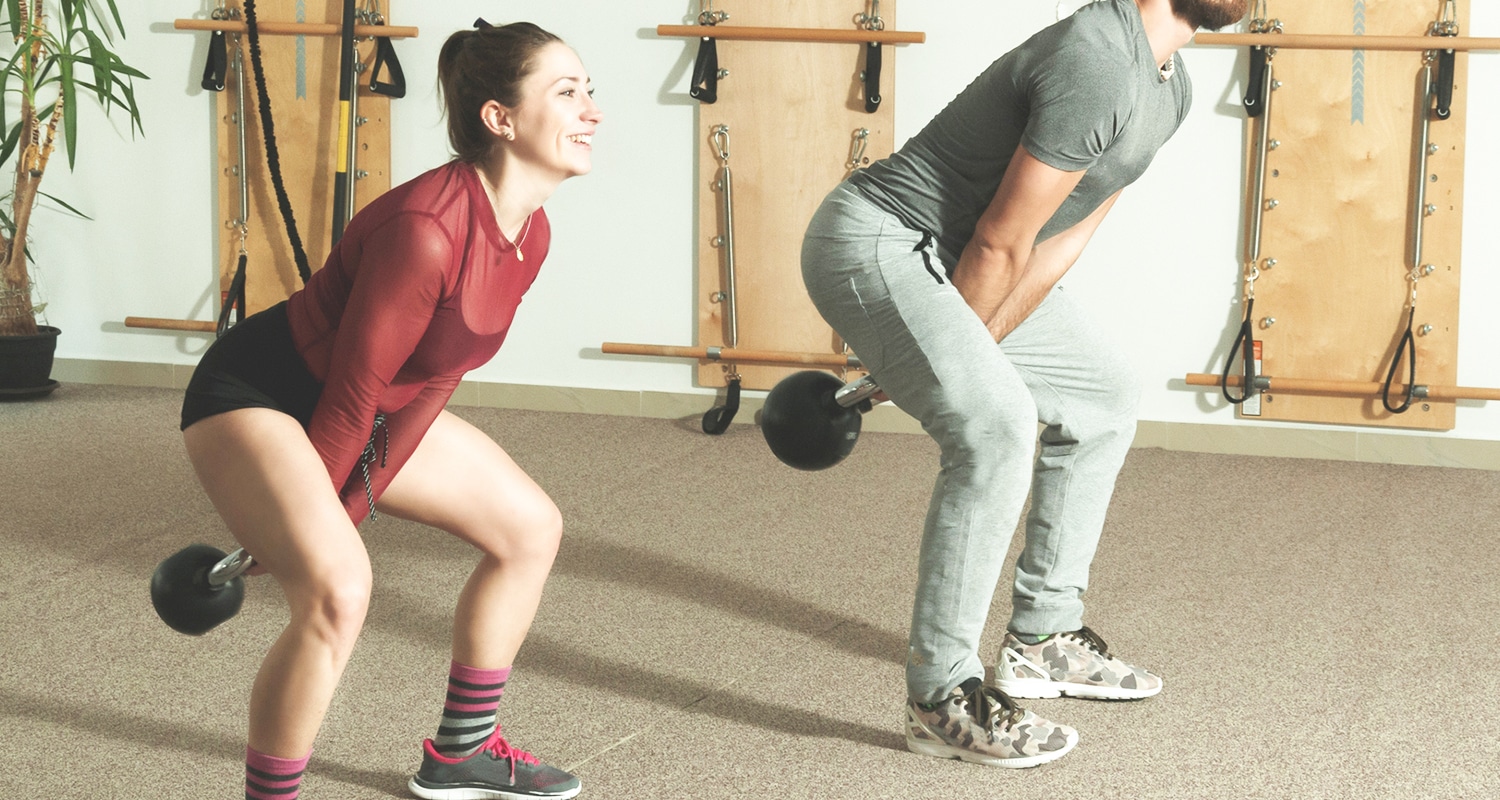 Stand with your feet slightly wider than shoulder-width with a kettlebell about a foot in front of you. With your weight in your heels, hinge at your hips while lowering your hands to the kettlebell handle. Grab the kettlebell with an overhand grip, “Hike” the kettlebell back between your legs, catching the force of the moving kettlebell with your hips. Exhale as you swing the kettlebell forward by thrusting your hips, straightening your legs, and squeezing your glutes and abs. Once the kettlebell reaches chest height, inhale as you allow it to fall, and guide it back to the “hiked” position.
Stand with your feet slightly wider than shoulder-width with a kettlebell about a foot in front of you. With your weight in your heels, hinge at your hips while lowering your hands to the kettlebell handle. Grab the kettlebell with an overhand grip, “Hike” the kettlebell back between your legs, catching the force of the moving kettlebell with your hips. Exhale as you swing the kettlebell forward by thrusting your hips, straightening your legs, and squeezing your glutes and abs. Once the kettlebell reaches chest height, inhale as you allow it to fall, and guide it back to the “hiked” position.
Targets: gluteus maximus, hamstrings, abdominals, upper and lower back, shoulders
7. Goblet squats
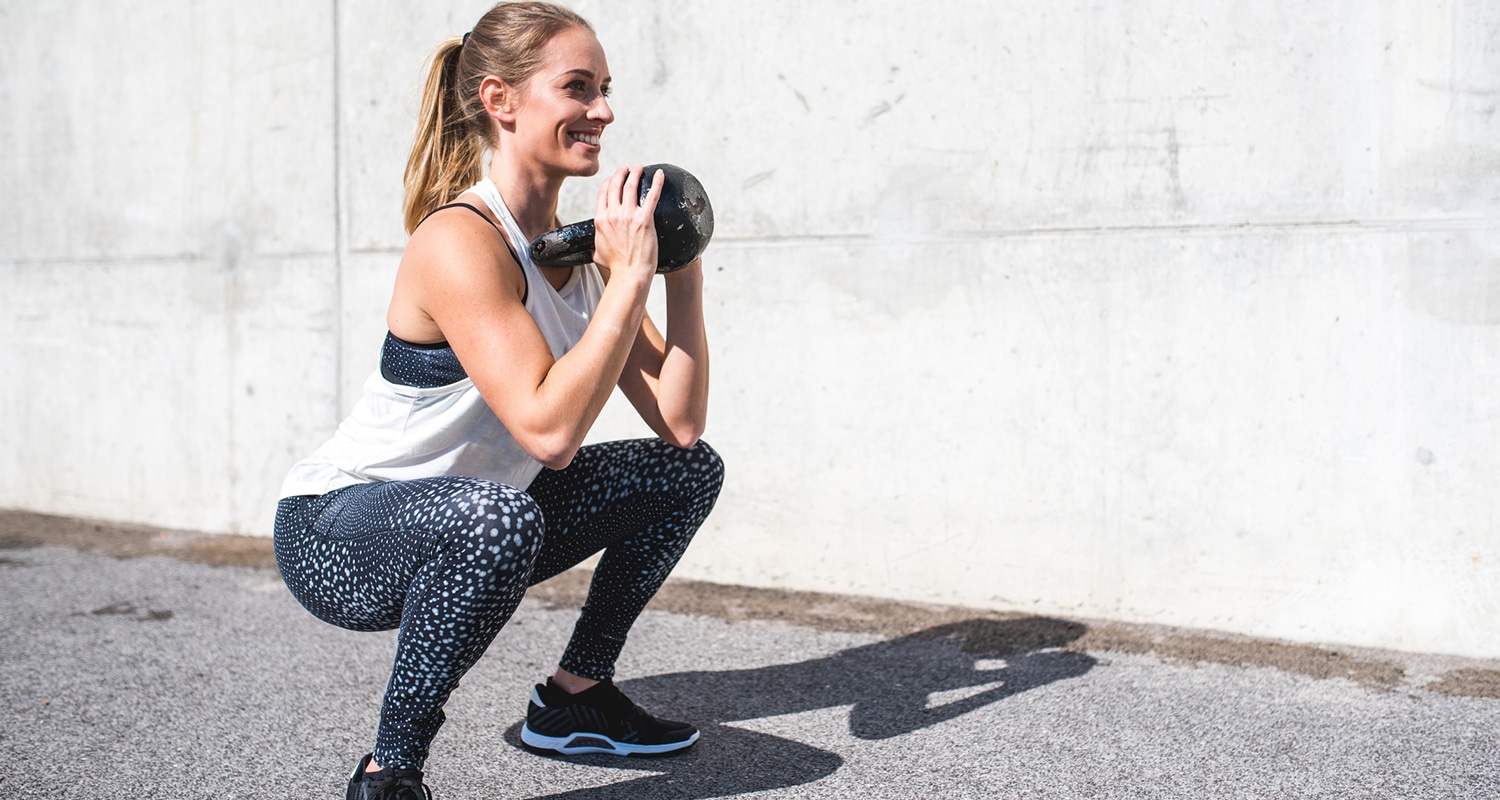 Stand with feet at shoulder width, holding a kettlebell at your chest. Inhale as you bend your knees and push your hips back to lower into a squat. Aim for your hips to come as low as your knees and avoid tucking your tailbone. Exhale and drive through your heels to rise to standing. Do 10 to 12 reps.
Stand with feet at shoulder width, holding a kettlebell at your chest. Inhale as you bend your knees and push your hips back to lower into a squat. Aim for your hips to come as low as your knees and avoid tucking your tailbone. Exhale and drive through your heels to rise to standing. Do 10 to 12 reps.
Targets: gluteus maximus, quadriceps, hamstrings, abdominals
8. Single-leg deadlifts
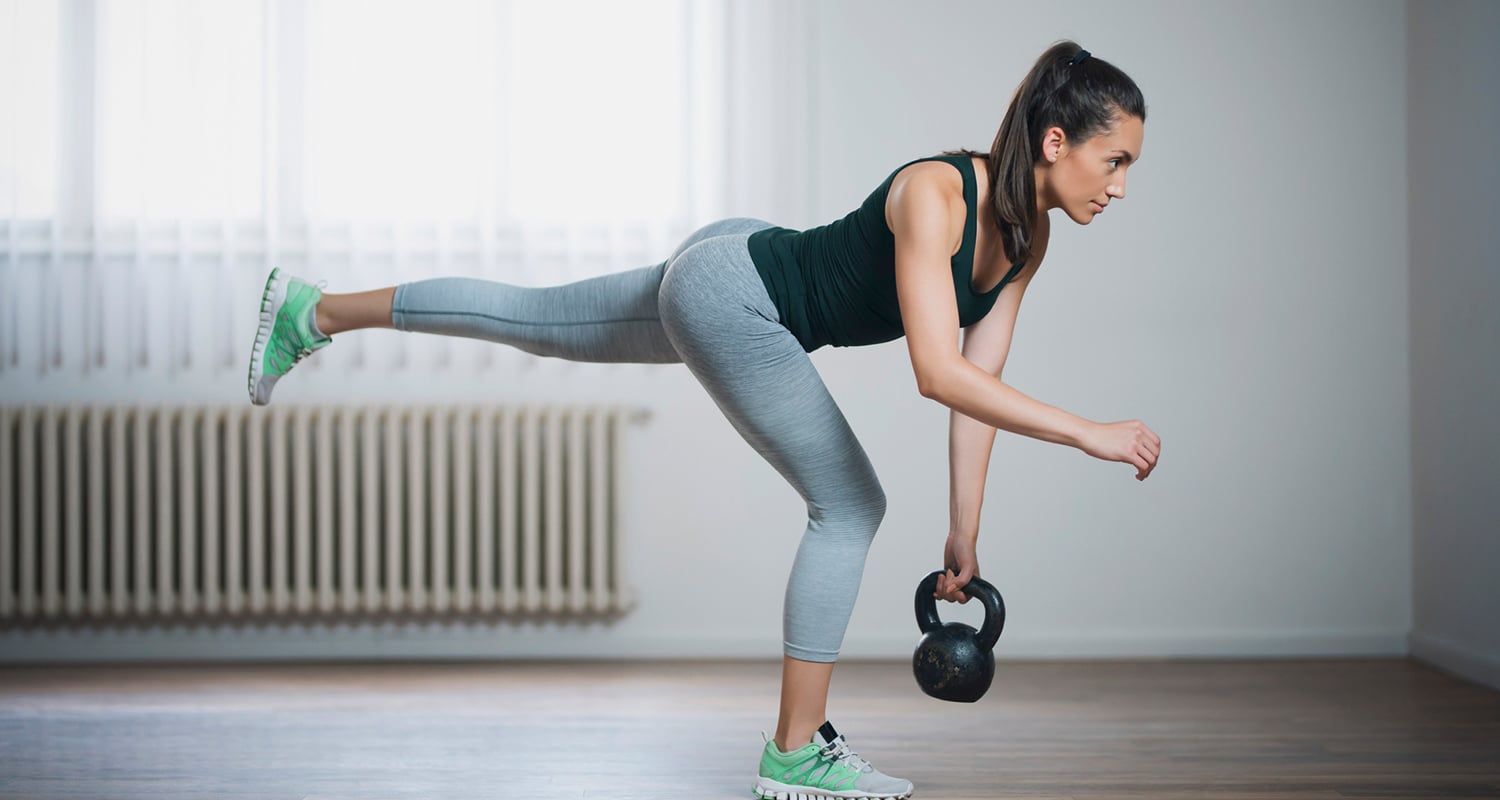 Holding a kettlebell in your left hand, stand on your right foot and lift your left foot off the ground… Keeping your weight in your midfoot to heel, inhale as you hinge at your hips and slightly bend your knee to push your butt backward. Keep your shin vertical and hips squared forward. Exhale as you drive through your heel to return to standing. Do 10-12 reps. Switch sides.
Holding a kettlebell in your left hand, stand on your right foot and lift your left foot off the ground… Keeping your weight in your midfoot to heel, inhale as you hinge at your hips and slightly bend your knee to push your butt backward. Keep your shin vertical and hips squared forward. Exhale as you drive through your heel to return to standing. Do 10-12 reps. Switch sides.
Targets: gluteus maximus, hamstrings, gluteus medius, and minimus, calves
Glute exercises with body weight
9. Reverse lunge to balance
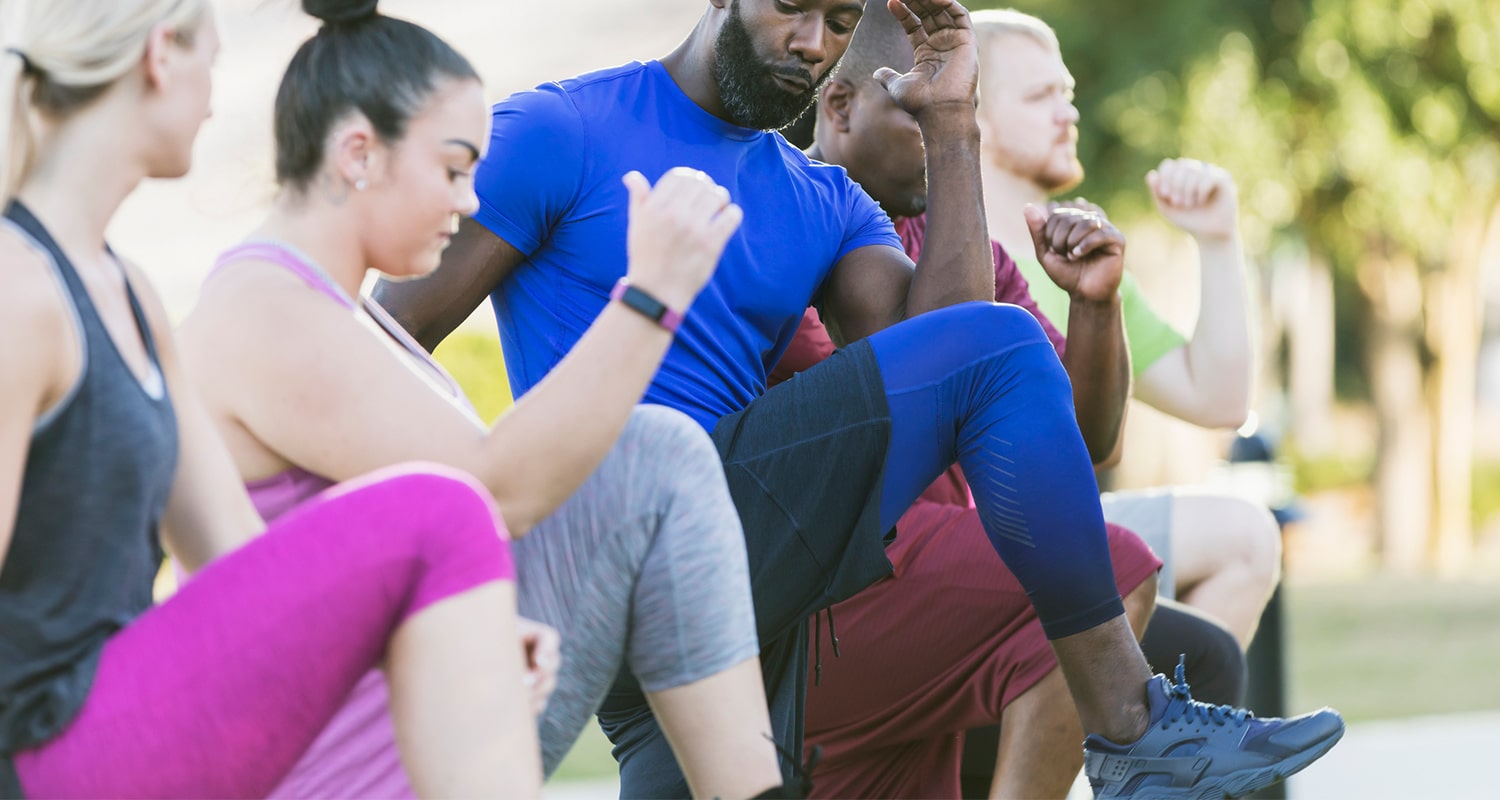 Stand on your right foot and lift your left foot off the ground. Inhale as you step your left foot back-ward into a lunge, so that your left knee hovers above the ground. Exhale as you drive through your right heel to rise to a single-leg stance, bringing your left leg forward and up to hip height. Do 10-12 reps. Switch sides. Optional: Load this move by holding a kettlebell at your chest or a dumbbell in each hand.
Stand on your right foot and lift your left foot off the ground. Inhale as you step your left foot back-ward into a lunge, so that your left knee hovers above the ground. Exhale as you drive through your right heel to rise to a single-leg stance, bringing your left leg forward and up to hip height. Do 10-12 reps. Switch sides. Optional: Load this move by holding a kettlebell at your chest or a dumbbell in each hand.
Targets: gluteus maximus, quadriceps, hamstrings, gluteus medius and minimus, calves
10. Single-leg hip thrusters
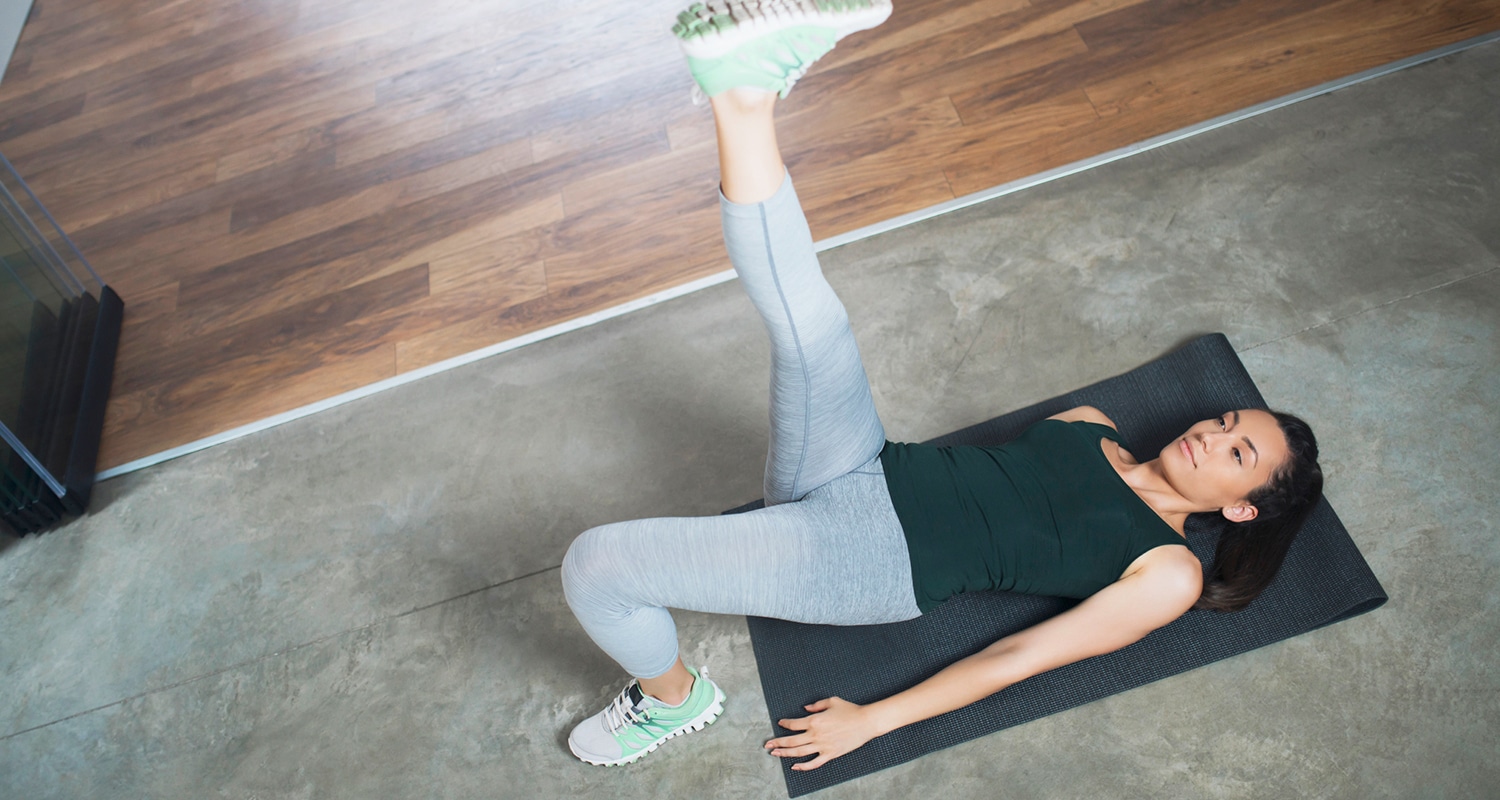 Lie on your back with knees bent and feet flat on the floor. Lift your hips to come into a bridge position. Lift your left leg off the ground and extend it in front of you, keeping your pelvis level. Inhale as you slowly lower your hips toward the ground. Exhale as you drive your right heel into the ground and lift your hips. Do 10-12 reps. Switch sides.
Lie on your back with knees bent and feet flat on the floor. Lift your hips to come into a bridge position. Lift your left leg off the ground and extend it in front of you, keeping your pelvis level. Inhale as you slowly lower your hips toward the ground. Exhale as you drive your right heel into the ground and lift your hips. Do 10-12 reps. Switch sides.
Targets: gluteus maximus, hamstrings, quadriceps, gluteus medius and minimus
11. Speed skaters
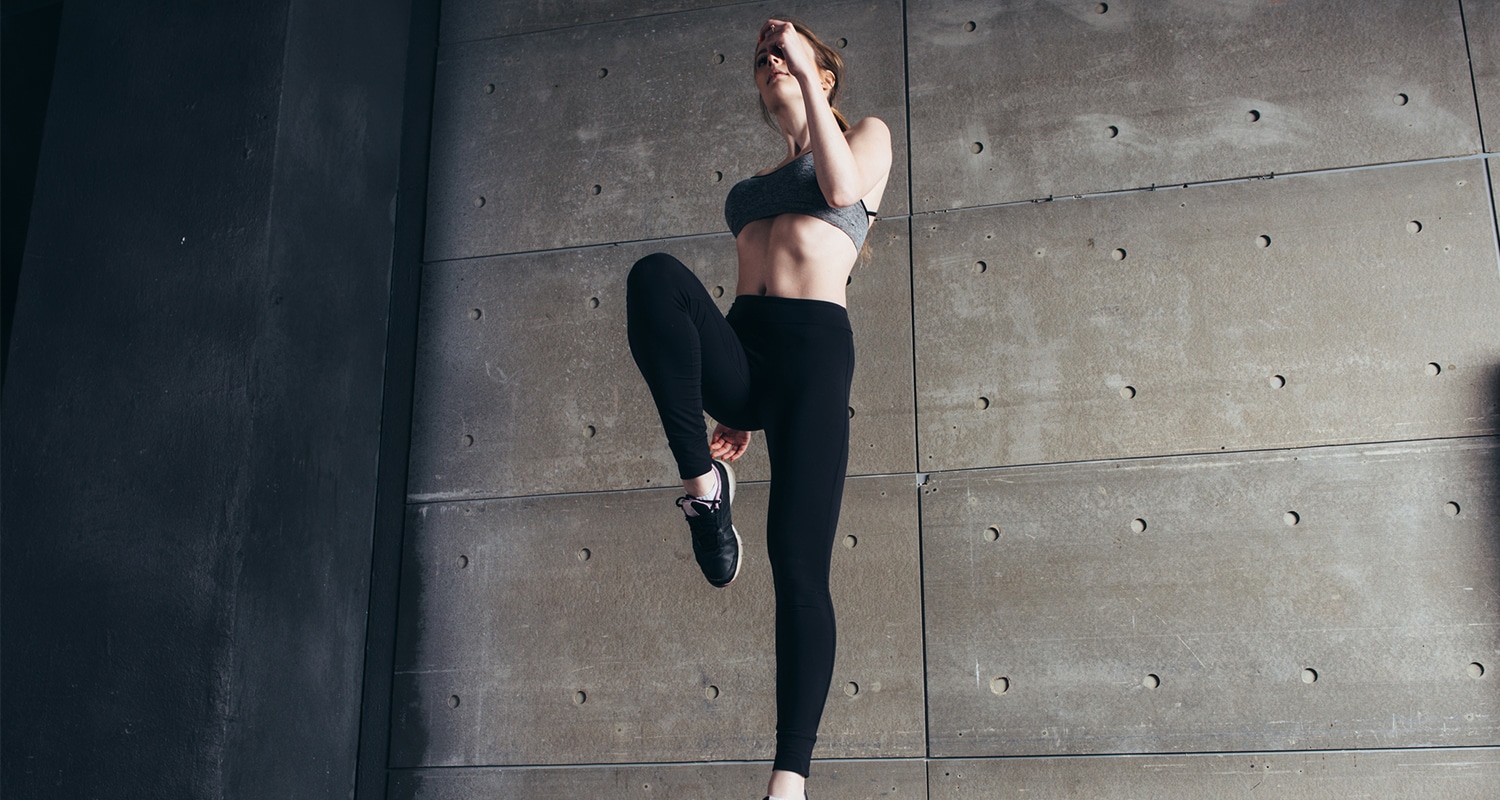 Stand with feet together, hips pushed back and knees slightly bent. Push off with your right foot and leap to your left, landing softly on your left foot. Push off with your left foot to leap back to the opposite side. Alternate sides for a total of 20 reps.
Stand with feet together, hips pushed back and knees slightly bent. Push off with your right foot and leap to your left, landing softly on your left foot. Push off with your left foot to leap back to the opposite side. Alternate sides for a total of 20 reps.
Targets: gluteus maximus, hamstrings, quadriceps, gluteus medius and minimus
12. Frog pumps
 Lie on your back with knees bent and feet flat on the floor. Lift your hips to come into a bridge position with a neutral spine. Tuck your chin into your chest. Dig your elbows into the ground. Press the bottoms of your feet together and move your heels as close to your butt as possible. Inhale as you lower your hips toward the ground. Exhale as you lift your hips. Do 15 reps.
Lie on your back with knees bent and feet flat on the floor. Lift your hips to come into a bridge position with a neutral spine. Tuck your chin into your chest. Dig your elbows into the ground. Press the bottoms of your feet together and move your heels as close to your butt as possible. Inhale as you lower your hips toward the ground. Exhale as you lift your hips. Do 15 reps.
Targets: gluteus maximus, medius and minimus
13. Walking lunges
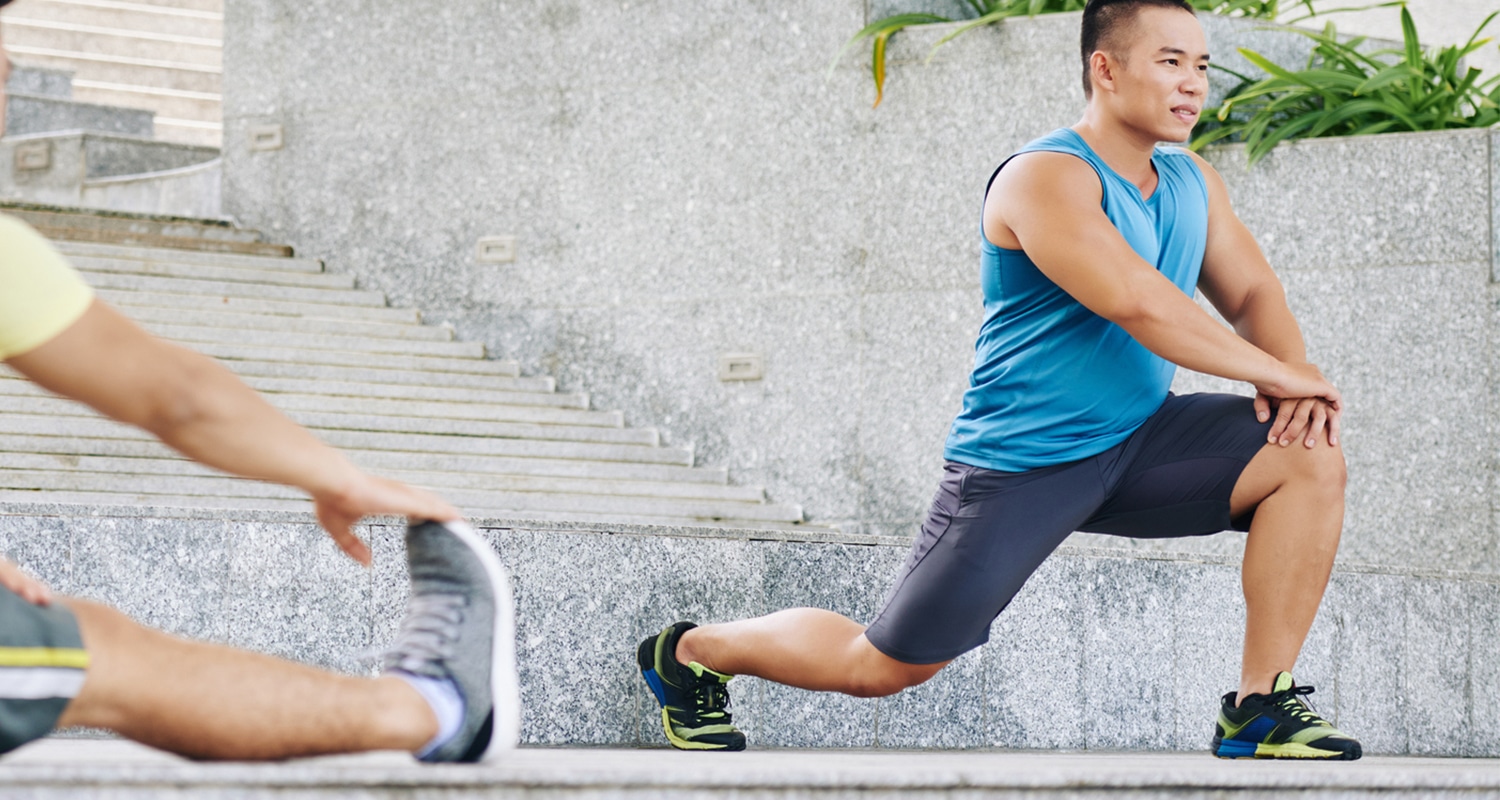 Step forward with your right foot and lower into a lunge, letting your left knee hover above the ground. Push off with your right foot to rise to a single-leg stance and step your left foot forward, immediately lowering into a lunge on this side. Alternate sides for a total of 20 reps.
Step forward with your right foot and lower into a lunge, letting your left knee hover above the ground. Push off with your right foot to rise to a single-leg stance and step your left foot forward, immediately lowering into a lunge on this side. Alternate sides for a total of 20 reps.
Targets: gluteus maximus, quadriceps, hamstrings

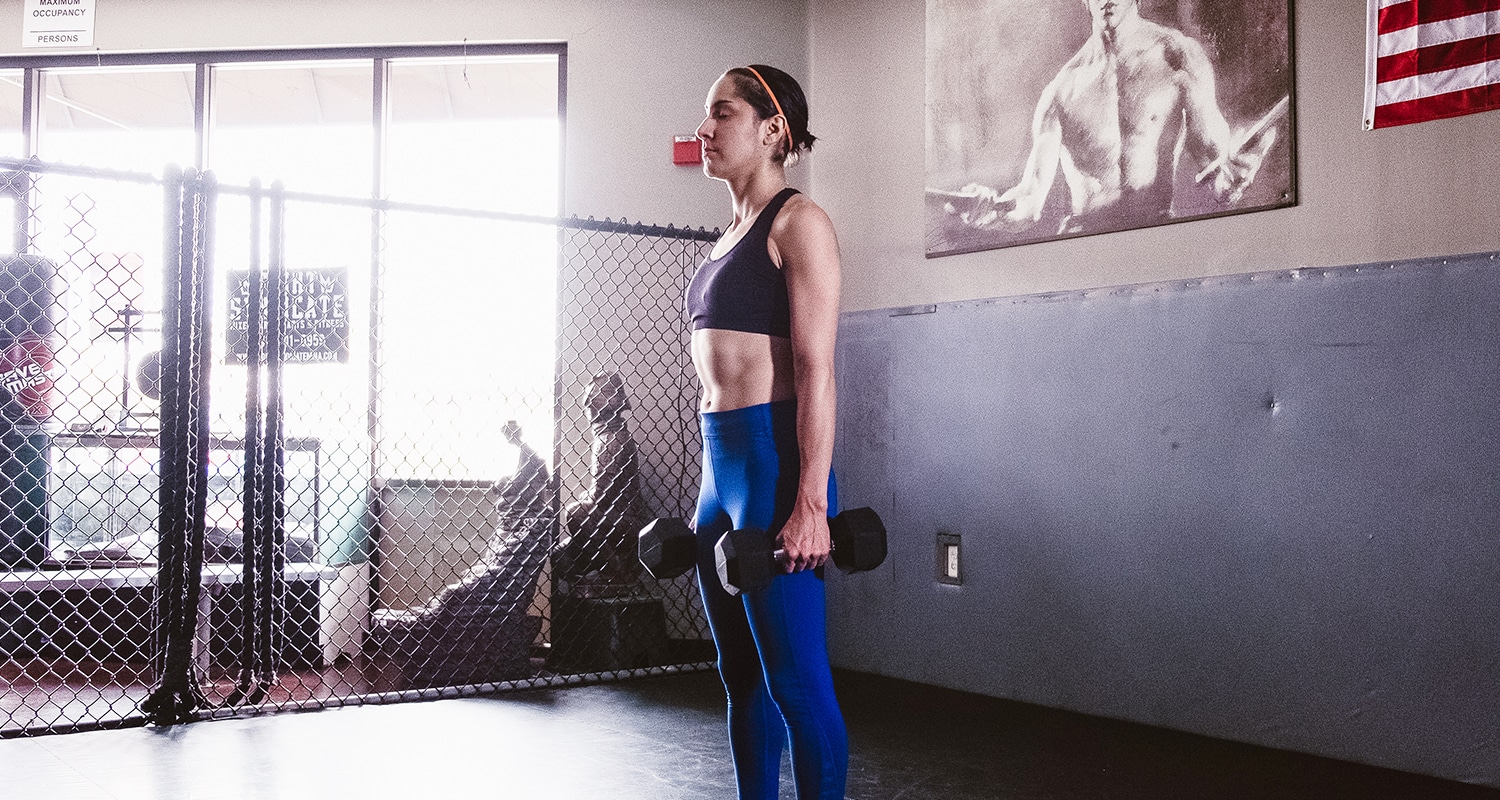 Never lift heavy weights without warming up first. Use your warm-up to prepare for the movements in the dumbbell workout and determine the weight you’ll be lifting. For your warm-up, perform two light sets of each workout move in a circuit format.
Never lift heavy weights without warming up first. Use your warm-up to prepare for the movements in the dumbbell workout and determine the weight you’ll be lifting. For your warm-up, perform two light sets of each workout move in a circuit format.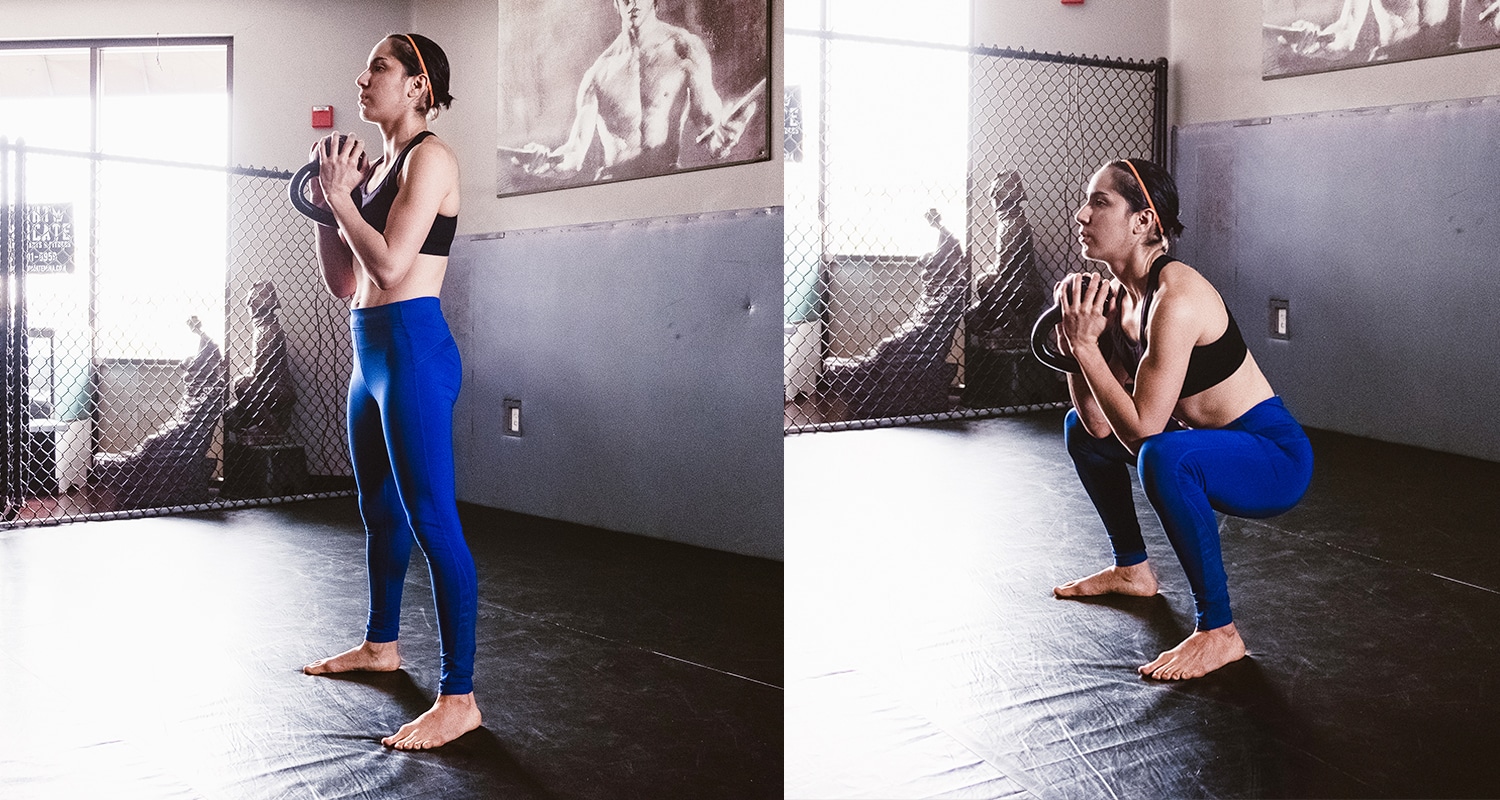
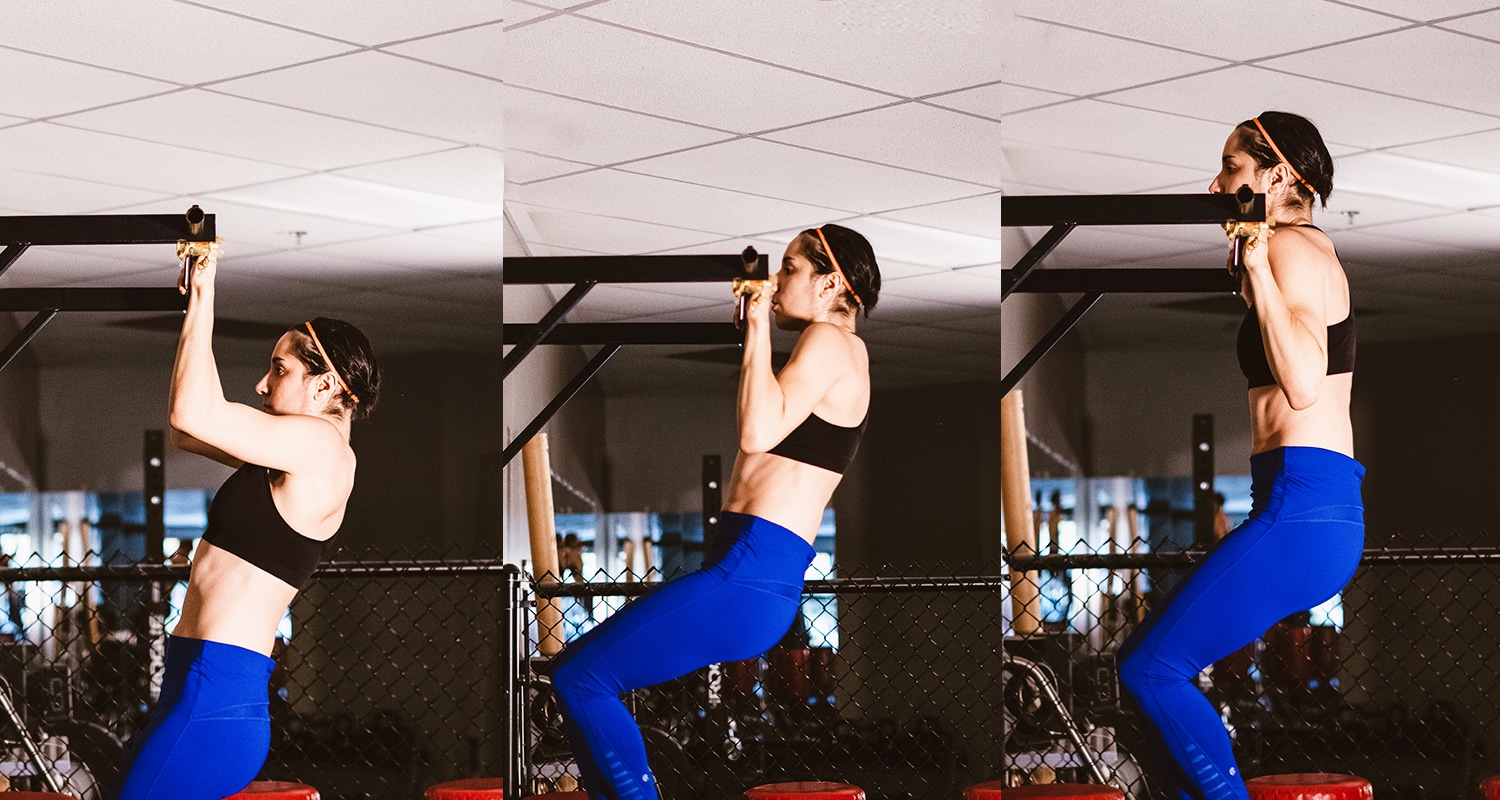
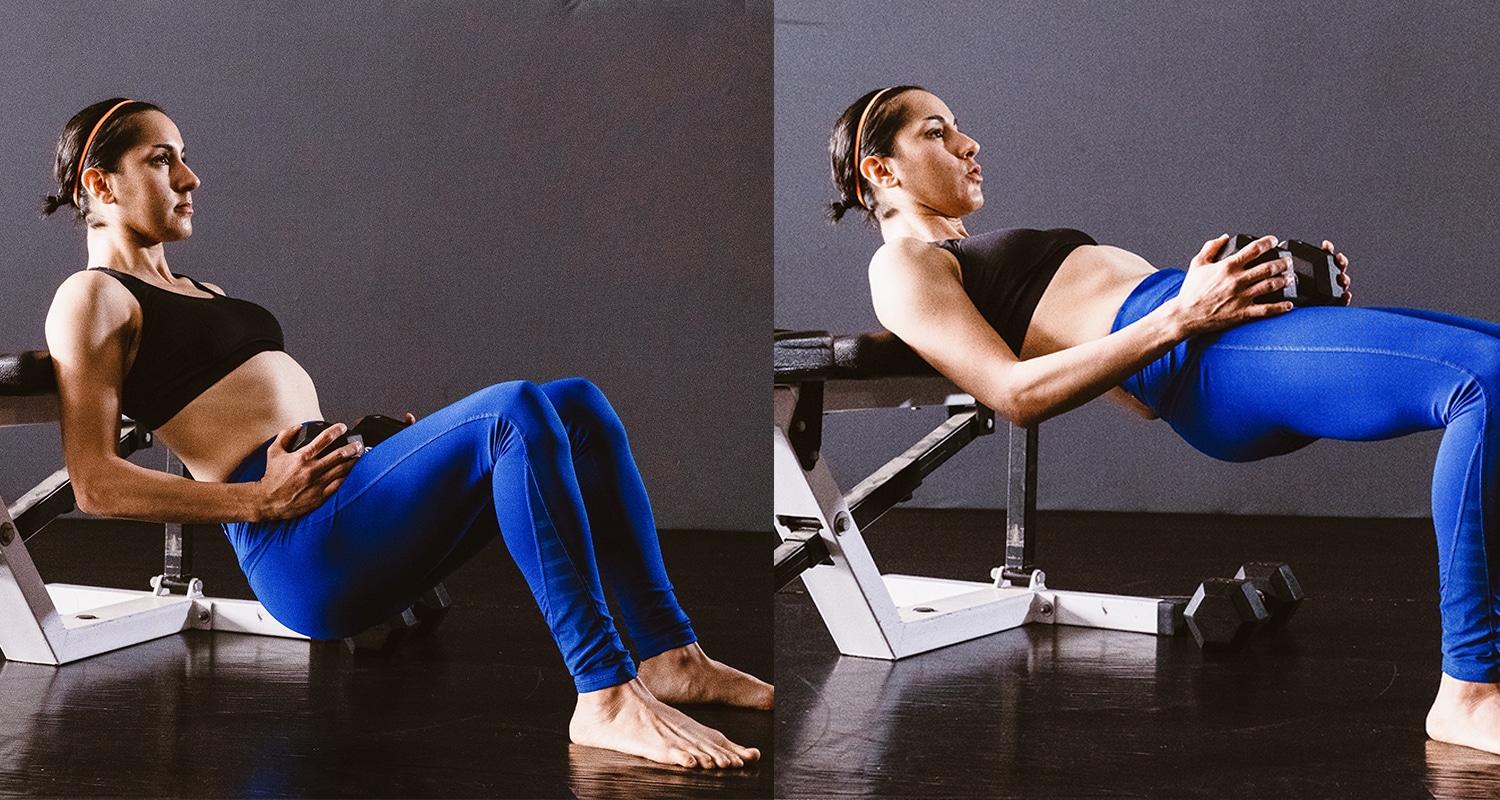

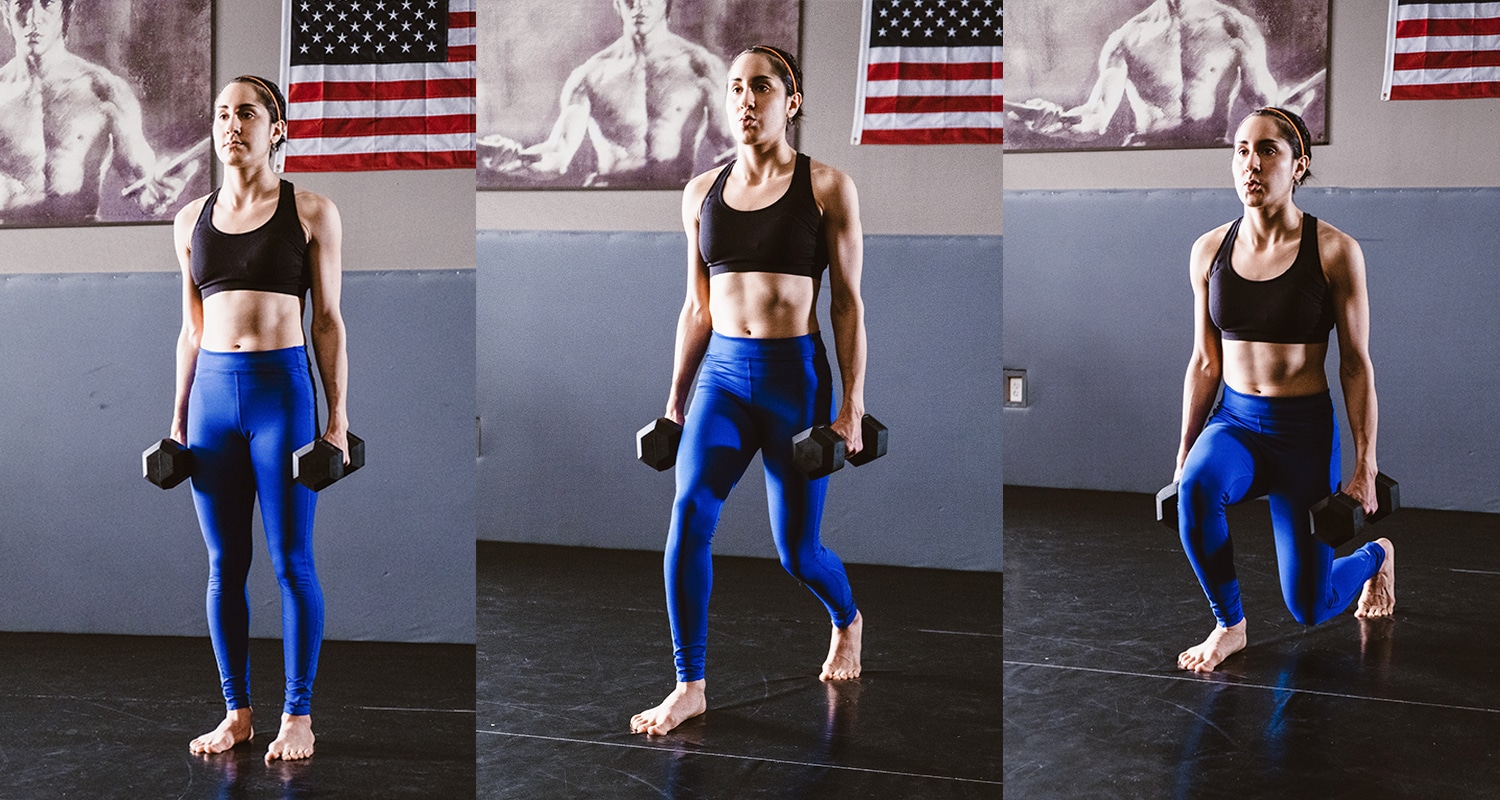
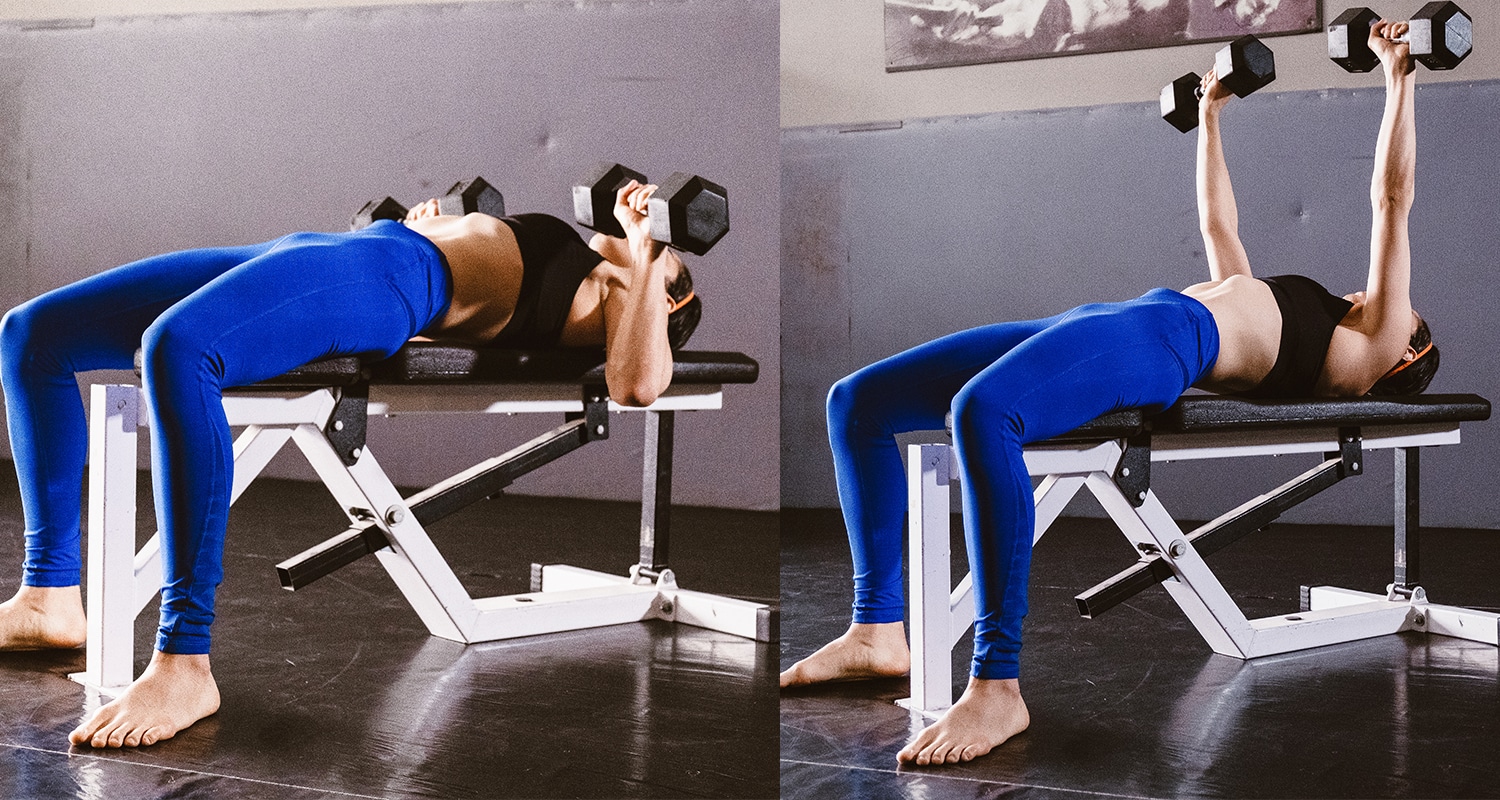

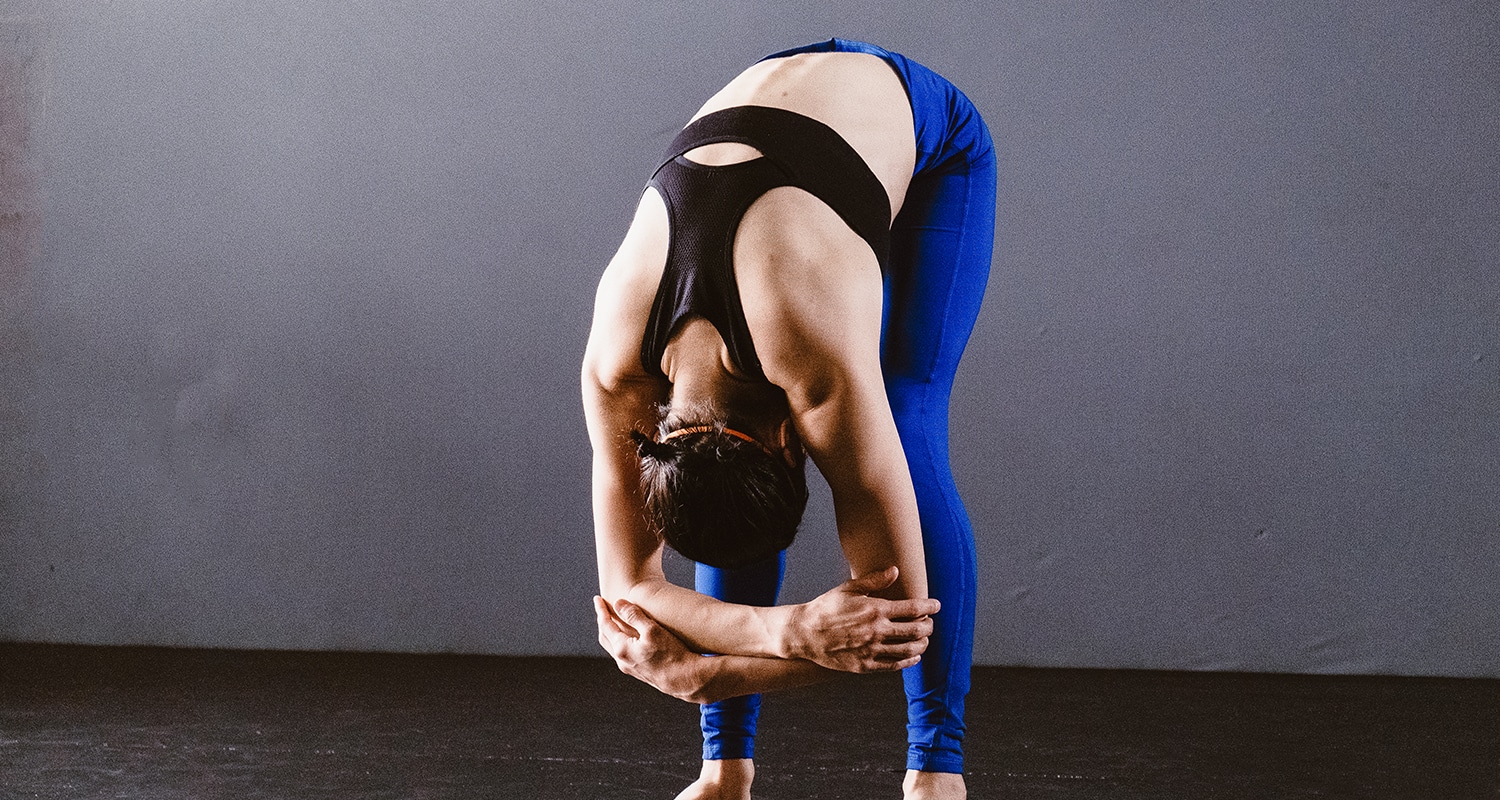


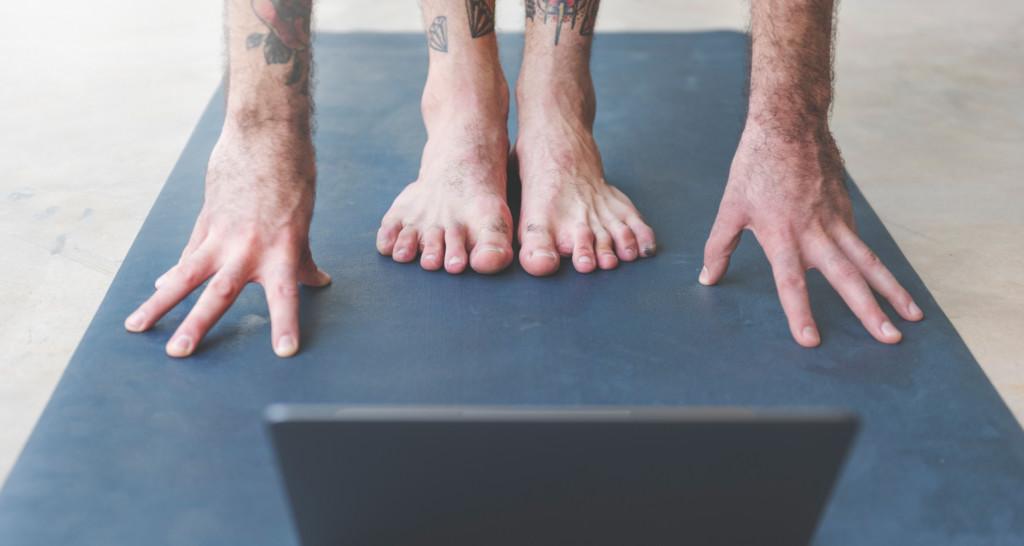
 For one, magnesium might promote better sleep by reducing stress. Research suggests that supplementing with magnesium has the potential to alleviate mild anxiety.[ref url=”https://www.ncbi.nlm.nih.gov/pmc/articles/PMC5452159/”] A number of biological processes may underlie this mollifying effect. A 2016 study suggests that magnesium lessens stress by keeping the sympathetic nervous system (aka your fight-or-flight stress response) in check, and activating the parasympathetic nervous system, which has a calming effect.[ref url=”https://link.springer.com/article/10.1007%2Fs15006-016-9054-7″]Other evidence indicates magnesium may calm your pre-bedtime racing mind, by regulating your brain’s
For one, magnesium might promote better sleep by reducing stress. Research suggests that supplementing with magnesium has the potential to alleviate mild anxiety.[ref url=”https://www.ncbi.nlm.nih.gov/pmc/articles/PMC5452159/”] A number of biological processes may underlie this mollifying effect. A 2016 study suggests that magnesium lessens stress by keeping the sympathetic nervous system (aka your fight-or-flight stress response) in check, and activating the parasympathetic nervous system, which has a calming effect.[ref url=”https://link.springer.com/article/10.1007%2Fs15006-016-9054-7″]Other evidence indicates magnesium may calm your pre-bedtime racing mind, by regulating your brain’s Magnesium is readily available in a variety of foods. Almonds and cashews are some of the most magnesium-dense foods around. Another good option: leafy greens, like spinach, which contain about 20 percent of your recommended intake per a half-cup (just be sure to cook them first to reduce oxalate levels). Avocados contain about 44 milligrams of magnesium per cup, while salmon, white rice, and carrots also contain a moderate amount of magnesium.[ref url=”https://ods.od.nih.gov/factsheets/Magnesium-HealthProfessional/”]
Magnesium is readily available in a variety of foods. Almonds and cashews are some of the most magnesium-dense foods around. Another good option: leafy greens, like spinach, which contain about 20 percent of your recommended intake per a half-cup (just be sure to cook them first to reduce oxalate levels). Avocados contain about 44 milligrams of magnesium per cup, while salmon, white rice, and carrots also contain a moderate amount of magnesium.[ref url=”https://ods.od.nih.gov/factsheets/Magnesium-HealthProfessional/”]